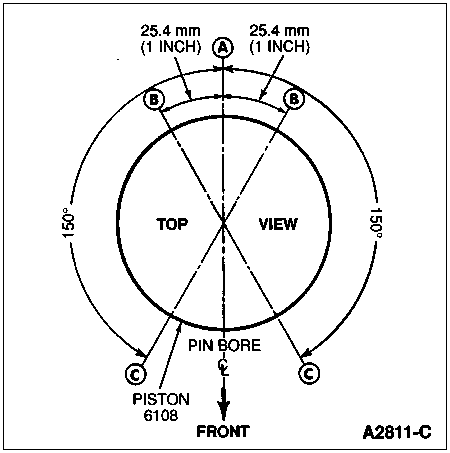![]() CAUTION: Never cut into the ring travel area in excess of 0.74mm (1/32 inch) when removing ridges.
CAUTION: Never cut into the ring travel area in excess of 0.74mm (1/32 inch) when removing ridges.
Rotate the crankshaft (6303) until the piston to be removed is at the bottom of the stroke and place a cloth on the piston dome to collect the cuttings. Remove any ridge and/or deposits from the upper end of the cylinder bore with Cylinder Ridge Reamer T64L-6011-EA. Follow the instructions furnished by the tool manufacturer.


